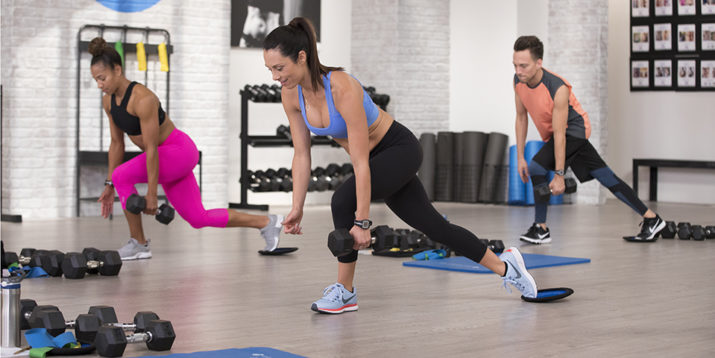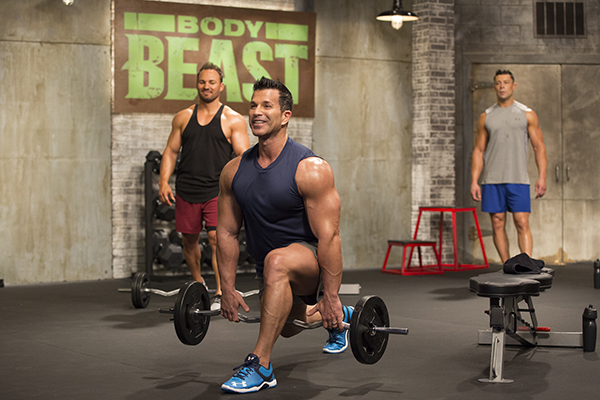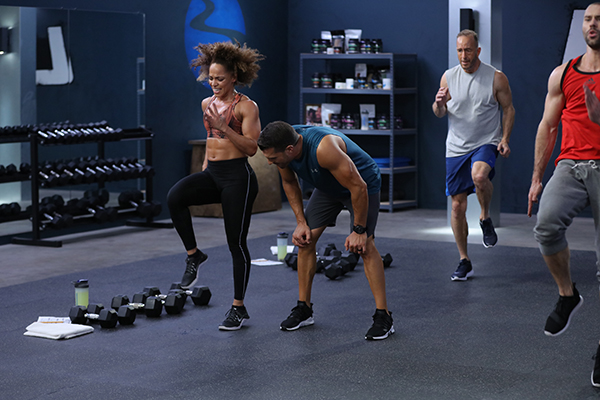Cross-Train With Beachbody On Demand Workouts

If you want to become good at something, it makes sense to do it as much as possible.
Running makes you better at running. Lifting makes you better at lifting. Cycling makes you better at cycling. And swimming makes you better at swimming.
But here’s the thing: Occasionally doing something different can make you even better at your primary sport.
Athletes call it cross-training, and the science behind it is simple: Engaging in a sport or activity other than your primary one allows you to use your muscles in new and unaccustomed ways — or emphasize different ones altogether.
Not only can that result in fewer overuse injuries, but it can also help iron out muscle imbalances, improve athletic performance, and boost motivation by reducing training monotony and boredom.
So how should you go about cross-training?
Consider what follows your go-to guide for what it is, how you can weave it into your workout program, and how Beachbody on Demand can help you maximize your results.

What Is Cross-Training?
The classic definition of cross-training is engaging in a sport or activity other than your primary one with the goal of improving athletic performance and longevity.
Think of it this way: Your main training focus (e.g., running, cycling, swimming, weightlifting) provides your athletic foundation and key skillset (e.g., strength, explosive power, cardiovascular and muscular endurance, etc.) while cross-training layers on additional skills, shores up weaknesses, bolsters strengths, and reduces overall injury risk.
If you spend most of your time on a bike, cross-training might translate into jumping on a rowing machine or hitting a running trail once or twice a week.
If you’re a runner, you might “run the rack” at the gym instead logging miles on the road, or swap one of your weekly terra firma sweat sessions for some laps in the pool.
And if you’re a weightlifter, you might occasionally trade iron for asphalt.
But cross-training effectively requires more than just sporadically dipping your toes in another sport’s pool.
You have to be strategic in how you integrate it into your current program so that it fast tracks your progress instead of shortchanging it.
Follow these four tips to start cross-training like a pro.

Cross-Training Step #1: Pump Iron
Endurance athletes often have an aversion to lifting weights, but science has yet to come up with a reason why they shouldn’t do it.
Not only can it boost speed, movement economy, and power output in runners, but it can also increase time to exhaustion and injury resistance.
Indeed, one meta-analysis in the British Journal of Sports Medicine found that strength training can cut overuse injuries by almost 50 percent.
Your move: Perform at least one (and ideally two) total-body strength workouts a week. Beachbody on Demand offers plenty of options, which you can find in programs such as LIIFT4, 6 Weeks of The Work, Body Beast, The Master’s Hammer and Chisel, P90X, 80 Day Obsession, and 645.
Your strength workouts can either replace existing cardio workouts (if you typically train five or more days per week), be performed between cardio workouts (if you train three or fewer days per week), or be performed back-to-back with cardio workouts, as they are in 30-Day Breakaway with Super Trainer Idalis Velazquez that combines strength training and running to help you crush a 5K in just four weeks.

Cross-Training Step #2: Do HIIT
At its most basic level, endurance training is simple: Throw on a pair of running shoes, hop on a bike, or jump in a pool and start logging miles or laps.
But if “steady state” training is all you do, you’re not optimizing your results.
Speedwork (e.g., interval training) is particularly important, as studies show that it can improve not only speed, power output, and VO2max, but also overall endurance.
Your Move: Do high-intensity interval training (HIIT) once or twice a week. HIIT can be done on a track or road, or in a pool, but it can also just as easily be performed in your living room.
That’s because the key to an effective interval workout isn’t what you do, but how you do it.
Your goal is to repeatedly exercise at your “lactate threshold” — the point at which your muscles start to burn and your breathing becomes too heavy to speak — by alternating periods of intense effort and active rest.
If you’ve ever done an INSANITY workout, you know what that means. You can also find HIIT workouts in LIIFT4, 80 Day Obsession, Morning Meltdown 100, and Job 1 with Jennifer Jacobs.

Cross-Training Step #3: Go for a Run
Strength training provides a host of benefits on its own — increased muscle growth, enhanced strength and power, fat loss, and (if you do it right) greater muscular endurance.
But if your sole training focus is pumping iron, you’re neglecting a key component of becoming a truly well-rounded athlete: improving your cardiorespiratory fitness.
That should be reason enough to add running to your strength program.
But if you need another, here it is: Engaging in aerobic exercise can help increase your resistance to fatigue and overall exercise capacity.
In other words, regularly pounding the pavement (or trail, or sand, or track) can give you the wherewithal to bang out more reps and sets when lifting weights, and as your training volume increases, so, too, will your strength gains.
Your move: Weave running into your strength training program at least twice a week.
If your program already includes indoor cardio workouts, you can simply swap one or two a week for a run.
If it doesn’t, you can either add a low-intensity, steady-state run between strength workouts to enhance your recovery, or you can take a more aggressive approach, combining strength and cardio in the same workout — as Idalis Velazquez does in 30 Day Breakaway.
If you take the latter approach, it’s important to always strength train first and run second to maximize your safety and minimize your risk of injury.
Also, be sure to regularly switch up your runs (e.g., do tempo runs, threshold runs, and speedwork in addition to “long slow distance”) to optimize your results.
Cross-Training Tip #4: Strike a Pose
When most people think of training, they only think of working out.
But what you do between workouts is just as important, because that’s when training adaptations (muscle growth, strength increases, fat loss, etc.) occur.
So you have a choice: You can ignore your recovery and leave your results to chance, or you can prioritize it and maximize your gains.
Your move: Add yoga to your weekly routine. Gentle stretching in the form of yoga can help ease muscle tension and enhance blood flow.
That, in turn, can help facilitate muscle repair and growth, optimizing your recovery and reducing the amount of time you need between intense training sessions. That translates into faster results and better workout performance.
Need some inspiration? You’ll find plenty of streaming yoga classes for every experience and ability level in the Beachbody Yoga Studio on Beachbody on Demand.
